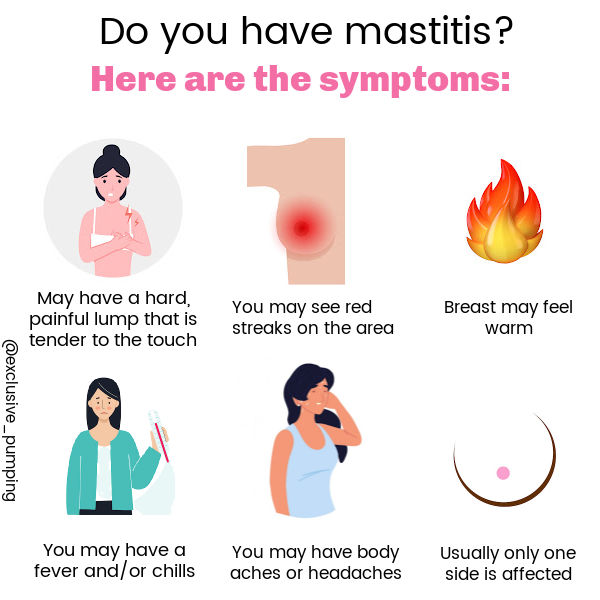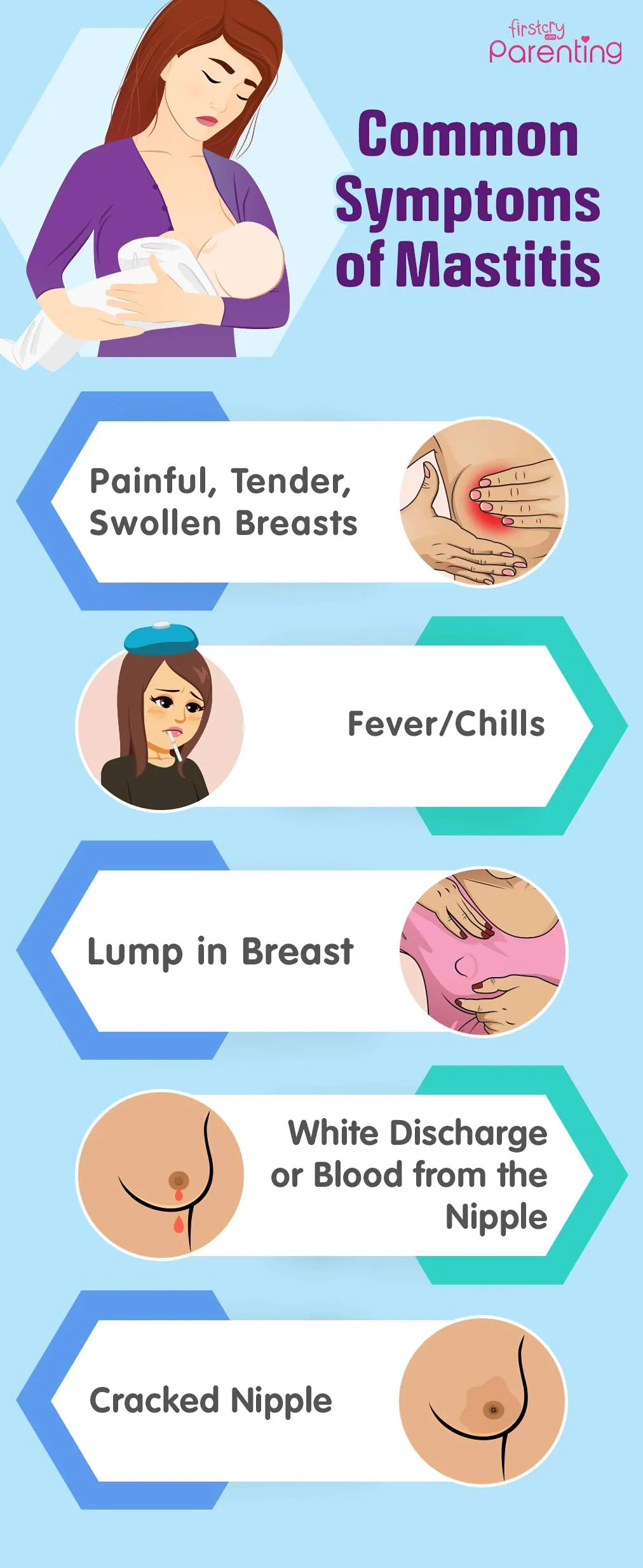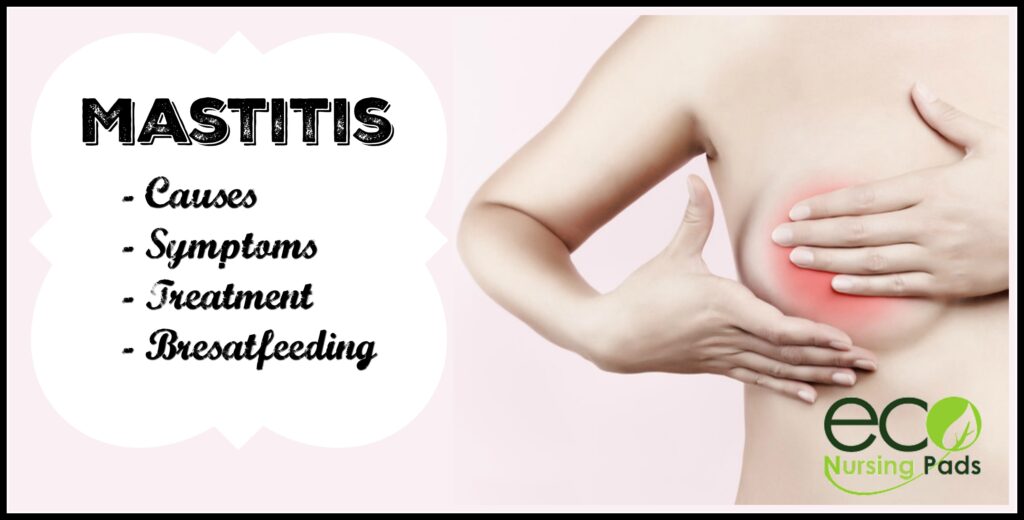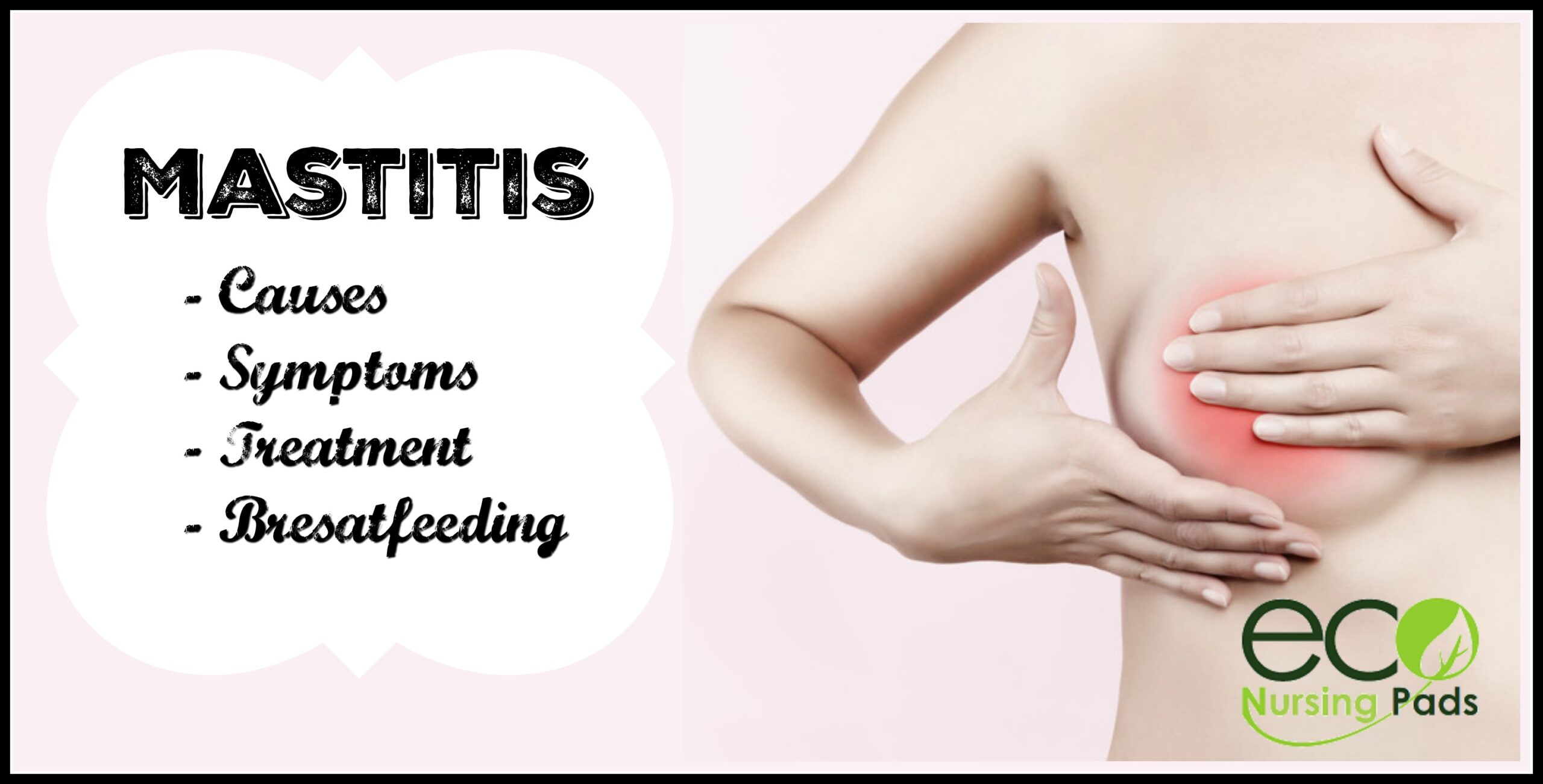Have you ever experienced breast pain, swelling, or redness? If so, you might be familiar with a condition called mastitis. In this article, we will explore the causes, symptoms, and treatment options for mastitis. Whether you are a new mother or simply curious about this common condition, we will guide you through the facts and provide valuable information to help you understand and manage mastitis effectively. So, let’s dive into the world of mastitis and uncover what lies behind this discomforting condition.
Causes
Bacterial infection
Mastitis is commonly caused by a bacterial infection, most often from the bacteria Staphylococcus aureus. These bacteria can enter the breast tissue through cracks or fissures in the skin around the nipple while breastfeeding. The infection can then spread, leading to the development of mastitis.
Poor milk removal
When milk is not effectively removed from the breasts, it can lead to a buildup of milk in the ducts. This can result from issues such as an improper latch, infrequent breastfeeding or pumping, or incomplete emptying of the breasts. When milk stasis occurs, it can increase the risk of developing mastitis.
Engorgement
Breast engorgement, a condition where the breasts become overly full of milk, can also contribute to the development of mastitis. This can occur when the milk supply exceeds the baby’s demand. The pressure from the engorged breasts can lead to milk stasis and subsequent infection.
Milk stasis
Milk stasis refers to the stagnant milk in the breast ducts that can occur when milk is not effectively removed. This can create an environment conducive to bacterial growth and increase the risk of mastitis. It is important to regularly empty the breasts to prevent milk stasis.
Blocked milk ducts
A blocked milk duct occurs when there is a partial or complete blockage in one or more of the milk ducts. This can be caused by factors such as pressure on the duct, tight-fitting clothing, or the presence of a milk blister. When a duct is blocked, it can lead to milk stasis and increase the likelihood of developing mastitis.
Milk contamination
In some cases, mastitis can occur when bacteria enter the breast milk itself. This can happen if the breast milk comes into contact with bacteria, such as through improper storage or handling of breast milk. Contaminated breast milk can introduce bacteria into the breast tissue, leading to infection and mastitis.
Symptoms
Breast pain
One of the common symptoms of mastitis is breast pain. This pain can be localized to a specific area or generalized throughout the breast. The pain may range from mild discomfort to severe and can be throbbing or sharp in nature.
Swelling and redness
When mastitis occurs, the affected breast may become swollen and red. This can be accompanied by a warm sensation to the touch. The swelling and redness are signs that the body is responding to the infection and attempting to fight it off.
Warmth to touch
In addition to swelling and redness, the affected breast may feel warm to the touch. This increased temperature is due to the inflammation caused by the infection. It is important to note that breastfeeding can also cause the breasts to feel warm, but persistent warmth may indicate the presence of mastitis.
Fever
Mastitis can often cause a fever to develop. This fever is typically low-grade, but in some cases, it may be higher. The presence of a fever indicates that the body is mounting an immune response to the infection.
Chills
In conjunction with a fever, chills can also occur with mastitis. Chills are often a sign of an acute infection and may be accompanied by sweating or feeling cold. If you experience chills in addition to other symptoms of mastitis, it is important to seek medical attention.
Flu-like symptoms
Mastitis can sometimes cause flu-like symptoms such as fatigue, body aches, and a general feeling of malaise. These symptoms are the result of the body fighting off the infection and can vary in severity.
Breast lump
In some cases, mastitis can lead to the development of a breast lump. This lump is typically tender to the touch and may be accompanied by other symptoms of mastitis. It is important to have any breast lump evaluated by a healthcare professional to rule out other potential causes.
Thickened breast milk
When mastitis occurs, the affected breast milk may become thicker or contain clumps. This is due to the inflammation and increased white blood cell count in the breast tissue. Thickened breast milk may also appear discolored or have an off smell.
Nipple discharge
Mastitis can sometimes cause nipple discharge to occur. The discharge may be pus-like or contain blood. If you notice any abnormal nipple discharge, it is important to consult with a healthcare provider for further evaluation.
Diagnosis
Clinical examination
To diagnose mastitis, a healthcare provider will conduct a clinical examination. The provider will assess the breasts for signs of redness, swelling, warmth, and tenderness. They may also evaluate the nipple and surrounding areas for any signs of infection. Additionally, they will inquire about your symptoms and medical history.
Breast milk analysis
In some cases, a sample of breast milk may be collected for analysis. This can help determine if there is an infection present and what type of bacteria may be causing it. Breast milk analysis can provide valuable information to guide treatment decisions.
Imaging tests
Imaging tests such as ultrasound or mammogram may be used to further evaluate the breast tissue. These tests can help identify any abnormalities or areas of concern, such as an abscess or fluid collection.
Milk culture
If an infection is suspected, a milk culture may be performed. This involves sending a sample of breast milk to a lab for analysis. A milk culture can help identify the specific bacteria causing the infection and guide treatment decisions.
Complications
Abscess formation
If mastitis is left untreated, it can progress to the formation of an abscess. An abscess is a pocket of pus that develops within the breast tissue. Abscesses often require drainage, either through a small incision or needle aspiration.
Septicemia
In rare cases, mastitis can lead to septicemia, a serious bloodstream infection. This can occur if the infection spreads beyond the breast tissue and enters the bloodstream. Septicemia requires immediate medical attention and can be life-threatening if left untreated.
Breast tissue damage
Untreated or recurrent mastitis can cause damage to the breast tissue. This can lead to scar tissue formation or changes in breast shape. In some cases, the damage may affect breastfeeding ability or milk production in the affected breast.
Recurrent mastitis
If the underlying causes or risk factors for mastitis are not addressed, it can lead to recurrent episodes of mastitis. Recurrent mastitis can be frustrating and may require more aggressive treatment or interventions to prevent future episodes.


Prevention
Proper breastfeeding technique
One of the key ways to prevent mastitis is by ensuring proper breastfeeding technique. This includes ensuring a correct latch, positioning the baby properly at the breast, and allowing the baby to fully empty the breast during feedings.
Frequent breastfeeding or pumping
Frequent breastfeeding or pumping can help prevent milk stasis and decrease the risk of mastitis. It is recommended to breastfeed on demand or pump every 2-3 hours, especially during the early days and weeks of breastfeeding.
Avoiding tight-fitting bras
Wearing tight-fitting bras or clothing can put pressure on the breasts and impede milk flow. It is important to wear comfortable, supportive bras that do not restrict the breasts. Avoiding underwire bras during breastfeeding can also help prevent mastitis.
Maintaining breast hygiene
Good breast hygiene is essential for preventing mastitis. This includes keeping the breasts clean and dry, changing breast pads frequently, and avoiding products that may irritate the nipples, such as harsh soaps or lotions.
Applying heat or cold compresses
The application of heat or cold compresses can help relieve breast discomfort and reduce inflammation. Heat can improve milk flow and help loosen any blocked ducts, while cold compresses can provide relief from swelling and pain. It is important to use caution and check with a healthcare provider before applying heat or cold.
Managing stress
High levels of stress can impact breastfeeding and increase the risk of mastitis. It is important to find ways to manage stress, such as through relaxation techniques, support from loved ones, or seeking professional help if needed. Taking care of your mental well-being can positively impact your breastfeeding journey.
Treatment
Antibiotics
The primary treatment for mastitis is a course of antibiotics. These medications are effective in treating the bacterial infection and reducing inflammation. It is important to take the full course of antibiotics as prescribed, even if symptoms improve.
Pain relievers
Over-the-counter pain relievers such as ibuprofen or acetaminophen can help alleviate breast pain and reduce fever associated with mastitis. It is important to follow the recommended dosage and consult with a healthcare provider before taking any medication while breastfeeding.
Continued breastfeeding or pumping
Despite the discomfort, it is essential to continue breastfeeding or pumping to effectively empty the breasts. This helps prevent milk stasis and promotes healing. Some women may find it helpful to adjust positioning or frequency of feedings to minimize discomfort.
Breast massage
Gentle breast massage can help improve milk flow and relieve engorgement or blockages. Massaging the breasts before or during feedings can help to break up any clumps of milk and facilitate drainage. It is important to use gentle pressure and avoid excessive force.
Warm compresses
Applying warm compresses to the affected breast can help relieve pain and promote milk flow. The heat from the compresses can also help to decrease inflammation and open blocked ducts. It is recommended to use a warm compress for 10-15 minutes before feedings or pumping.
Milk expression methods
In addition to breastfeeding, using other milk expression methods can help promote milk flow and alleviate symptoms of mastitis. Techniques such as hand expression, manual breast pumps, or electric breast pumps can aid in emptying the breasts and preventing milk stasis.
Supportive care
Along with medical treatment, supportive care can play a crucial role in mastitis recovery. This includes getting plenty of rest, staying hydrated, eating a nutritious diet, and seeking emotional support from loved ones or a healthcare professional.


Home Remedies
Cabbage leaf compresses
Cabbage leaf compresses have been used for years as a home remedy for mastitis. Chilled cabbage leaves can provide relief from pain and inflammation. Simply place clean, chilled cabbage leaves on the affected breast for 15-20 minutes, several times a day.
Epsom salt soaks
Taking warm Epsom salt soaks can help reduce inflammation and discomfort associated with mastitis. Dissolve Epsom salts in warm water and soak the affected breast for 15-20 minutes. Be sure to dry the breast thoroughly afterward.
Garlic poultices
Garlic has natural antibacterial properties and can help fight off infection. Crushing garlic cloves and creating a poultice by wrapping them in a clean cloth can be applied to the affected breast for 10-15 minutes. It is recommended to consult with a healthcare provider before using garlic poultices.
Fenugreek tea
Fenugreek is known for its potential to increase milk supply and has anti-inflammatory properties. Drinking fenugreek tea can help alleviate symptoms of mastitis. Simply steep fenugreek seeds in hot water and drink the tea a few times a day.
Lecithin supplements
Lecithin supplements can help prevent recurrent mastitis by improving milk flow and reducing the risk of blocked ducts. It is recommended to consult with a healthcare provider before starting any supplements, including lecithin.
When to See a Doctor
Persistent breast pain
If you are experiencing persistent breast pain, especially when accompanied by other symptoms of mastitis, it is important to see a healthcare provider. Prompt evaluation and treatment can help prevent complications and promote healing.
Worsening symptoms
If your symptoms are worsening despite home remedies or self-care measures, it may be necessary to seek medical attention. Mastitis should not be ignored, as it can progress and lead to serious complications if left untreated.
High fever
If you develop a high fever, generally above 101°F (38.3°C), it is important to seek medical attention. A high fever can indicate a more severe infection or the spread of bacteria beyond the breast tissue.
Development of abscess
If you notice the development of a painful, firm lump in the breast, it may indicate the presence of an abscess. Abscesses often require medical intervention such as drainage, so it is important to have any breast lumps evaluated.
No improvement with home remedies
If you have been consistently using home remedies and self-care measures for several days without improvement, it is recommended to consult with a healthcare provider. They can evaluate your symptoms and determine if additional treatment is necessary.


Breastfeeding and Mastitis
Impact on breastfeeding
Mastitis can temporarily impact breastfeeding, but it does not mean you need to stop breastfeeding altogether. In fact, continuing to breastfeed or pump is essential for preventing complications and promoting healing. The milk from the affected breast is safe for the baby to consume, and the act of breastfeeding can help improve milk flow and drainage.
Safe breastfeeding practices
It is important to practice safe breastfeeding techniques to prevent the development or recurrence of mastitis. This includes ensuring a proper latch, allowing the baby to fully empty the breast, and avoiding the use of bottles or pacifiers until breastfeeding is well-established.
Effect on milk supply
Mastitis can sometimes temporarily decrease milk supply in the affected breast. However, with proper management and continued breastfeeding or pumping, the milk supply typically rebounds. It is important to keep the affected breast well-drained to maintain milk production.
Conclusion
In conclusion, mastitis is a common condition that can occur during breastfeeding. It can be caused by a bacterial infection, poor milk removal, engorgement, milk stasis, blocked milk ducts, or milk contamination. Recognizing the symptoms of mastitis, such as breast pain, swelling, warmth, and fever, is crucial for early detection and prompt treatment.
Diagnosis of mastitis typically involves a clinical examination, breast milk analysis, imaging tests, and milk culture. Complications of mastitis can include abscess formation, septicemia, breast tissue damage, and recurrent episodes.
Preventive measures such as proper breastfeeding technique, frequent breastfeeding or pumping, avoiding tight-fitting bras, maintaining breast hygiene, using heat or cold compresses, and managing stress can help reduce the risk of mastitis.
Treatment for mastitis usually involves antibiotics, pain relievers, continued breastfeeding or pumping, breast massage, warm compresses, milk expression methods, and supportive care. Home remedies such as cabbage leaf compresses, Epsom salt soaks, garlic poultices, fenugreek tea, and lecithin supplements may also provide relief.
It is important to seek medical attention if symptoms persist, worsen, or if there is a high fever, development of an abscess, or no improvement with home remedies. Mastitis does not mean the end of breastfeeding, and safe breastfeeding practices should be continued to prevent complications and maintain milk supply.
Early detection, proper treatment, and emphasis on preventive measures are key to managing mastitis effectively. With proper care and support, breastfeeding can continue successfully and mastitis can be overcome.



